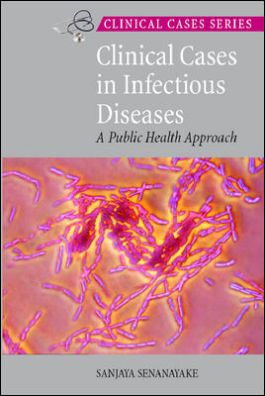Clinical Cases in Infectious Diseases
1st Edition
007471662X
·
9780074716625
© 2007 | Published: November 30, 2007
Infectious diseases do not recognize geographic, political or social boundaries. Health workers everywhere, whether they are clinically-based, laboratory-based or from a public health background, must collaborate in all aspects of investigation, diag…
Read More
Request Review Copy
Receive via shipping:
- Colour, print bound version of the complete text
Case 1: Botulism
Case 2: Buruli ulcer
Case 3: Cholera
Case 4: Cryptosporidiosis and giardiasis
Case 5: Dengue fever
Case 6: Diphtheria
Case 7: Enteric fever
Case 8: Hepatitis A
Case 9: Influenza
Case 10: Invasive pneumococcal disease
Case 11: Legionnaire’s disease
Case 12: Listeria
Case 13: Measles
Case 14: Meningococcal disease
Case 15: Mumps
Case 16: Pertussis (whooping cough)
Case 17: Poliomyelitis
Case 18: Q fever
Case 19: Rabies
Case 20: Severe Acute Respiratory Syndrome (SARS)
Case 22: Tetanus
Case 22: Tuberculosis
Infectious diseases do not recognize geographic, political or social boundaries. Health workers everywhere, whether they are clinically-based, laboratory-based or from a public health background, must collaborate in all aspects of investigation, diagnosis and control of such infections. Clinical Cases in Infectious Diseases: A Public Health Approach, increases our understanding of the synergy generated by these groups when they work closely together to fight notifiable infections. Twenty-two Clinical Cases comprehensively discuss twenty-three infections in a problem-based format. Each chapter is modelled on an interactive scenario with characters and dialogue, incorporating clinical, laboratory and public health aspects.
Key features include:
• at a glance provides a comprehensive overview of the disease
• differential diagnoses demonstrates what serious diseases can mask as
• investigations identifies what tests should be undertaken given the presentation
• treatment guides the reader through current processes of clinical management
• prognosis presents the likely outcomes
• isolation measures identifies how to avoid an outbreak

